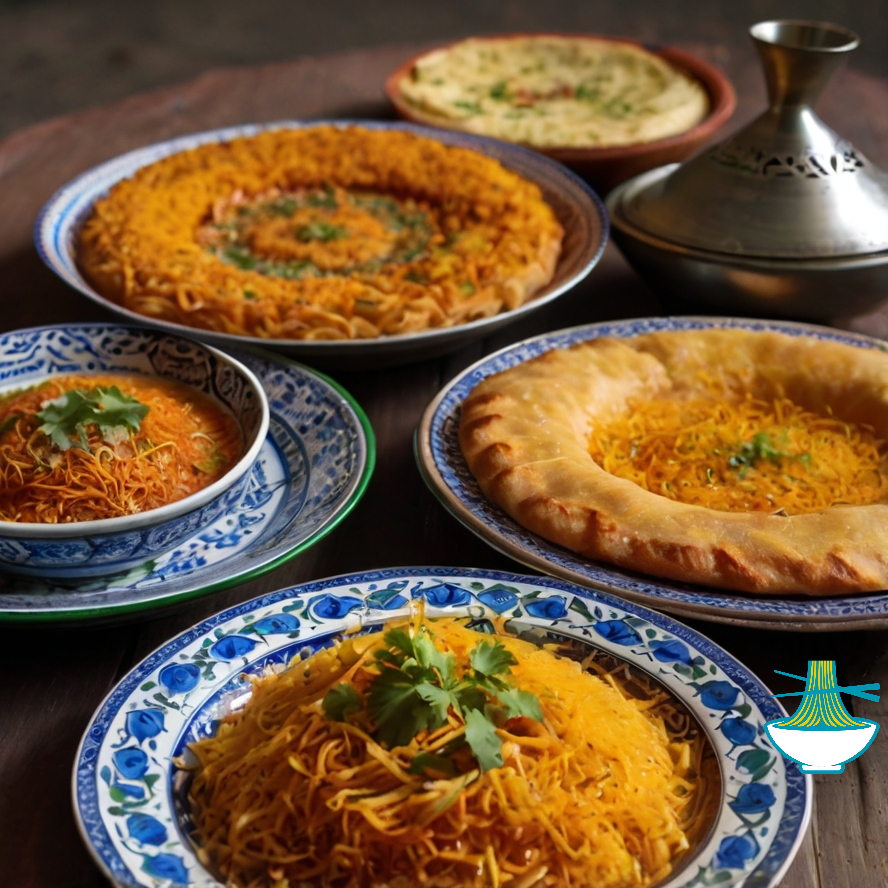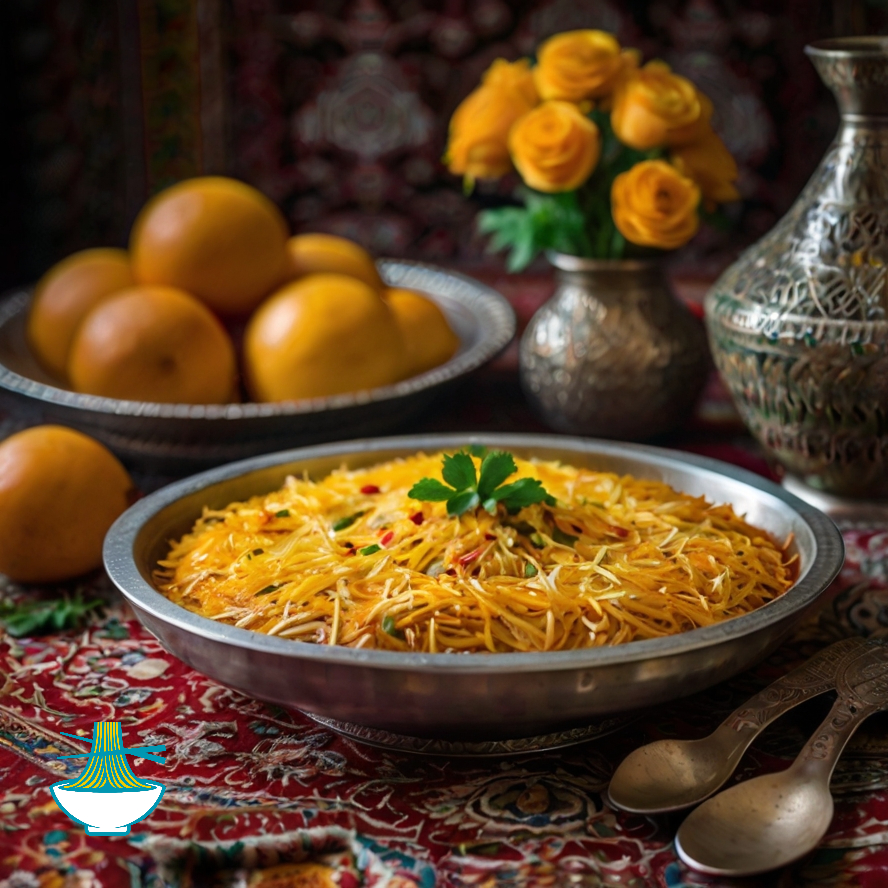Dive into the heart of Iranian cuisine with Tahdig, the golden, crispy rice crust that's cherished in households across Iran. Discover the artistry and technique behind creating this prized delicacy, forming a crunchy crown at the bottom of the pot. Unveil the secrets of achieving the perfect balance of texture and flavor, as Tahdig adds a tantalizing dimension to traditional Iranian rice dishes. Join us on a culinary journey to savor the essence of Iran's rich gastronomic heritage through the irresistible allure of Tahdig.
Ingredients:
- 2 cups Basmati rice
- 4 cups water
- 2 tablespoons salt
- 1/4 cup vegetable oil or clarified butter (ghee)
Instructions:
1- Rinse the rice in cold water until the water runs clear. This helps remove excess starch and prevents the rice from sticking together.
2- In a large pot, bring the water to a boil. Add the salt and rice to the boiling water.
3- Let the rice cook on high heat for about 6-8 minutes until it is parboiled. The rice grains should be soft on the outside but still firm in the center. Be careful not to overcook the rice.
4- Drain the rice in a colander and rinse it with cold water to stop the cooking process. Allow it to drain thoroughly.
5- In the same pot you used to cook the rice, heat the vegetable oil or ghee over medium heat. Make sure the bottom of the pot is evenly coated with oil.
6- Once the oil is hot, add the parboiled rice back into the pot, spreading it evenly to cover the bottom. Use the back of a spoon to gently press down on the rice to compact it.
7- Using the handle of a wooden spoon or spatula, poke 5-6 holes in the rice to allow steam to escape.
8- Cover the pot with a clean kitchen towel or several layers of paper towels, then cover tightly with a lid. The towel will absorb excess moisture and prevent the steam from dripping back onto the rice, ensuring a crisp crust.
9- Reduce the heat to low and let the rice cook undisturbed for 45-60 minutes. During this time, the bottom layer of rice will form a golden-brown crust, known as Tahdig.
10- Once the Tahdig is ready, carefully remove the lid and towel. Use a spatula to loosen the edges of the rice from the pot.
11- Place a large serving platter over the pot and quickly flip it upside down to release the Tahdig onto the platter.
12- Serve the Tahdig immediately, alongside your favorite Iranian rice dish or as a crunchy, flavorful snack on its own.
Enjoy your homemade Tahdig, the crispy golden jewel of Iranian cuisine!
Nutritional Values :
2 Cups Basmati Rice:
- Calories: About 680 kcal
- Fat: 0.5g
- Carbohydrates: 148g
- Protein:12g
Benefits: Basmati rice is a good source of carbohydrates and provides essential energy. It is also lower in arsenic compared to some other rice varieties and can be easier to digest.
4 Cups Water:
- Calories: 0 kcal
- Fat: 0g
- Carbohydrates: 0g
- Protein: 0g
Benefits: Essential for cooking the rice and helps in achieving the desired texture. No nutritional value but crucial for hydration and cooking.
2 Tablespoons Salt:
- Calories: 0 kcal
- Fat: 0g
- Carbohydrates: 0g
- Protein: 0g
Benefits: Enhances the flavor of the rice. Use in moderation to manage sodium intake.
1/4 Cup Vegetable Oil or Clarified Butter (Ghee):
Vegetable Oil:
- Calories: About 480 kcal
- Fat:56g
- Carbohydrates: 0g
- Protein: 0g
Benefits: Provides healthy fats and enhances the flavor of the rice. Vegetable oil is neutral and versatile.
Clarified Butter (Ghee):
- Calories: About 450 kcal
- Fat: 50g
- Carbohydrates: 0g
- Protein: 0g
Benefits: Ghee is rich in vitamins A, D, E, and K. It has a higher smoke point than many oils and provides a rich, nutty flavor.
Please note that these values are approximate and can vary based on factors such as brand, specific ingredients used, and cooking methods. Additionally, the values provided are for the entire recipe, so you may need to adjust them based on serving size.


Comments